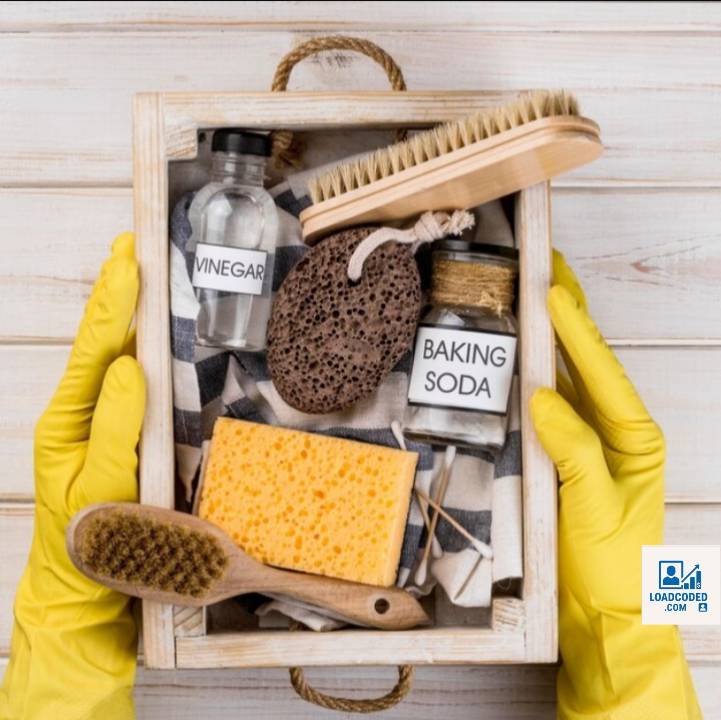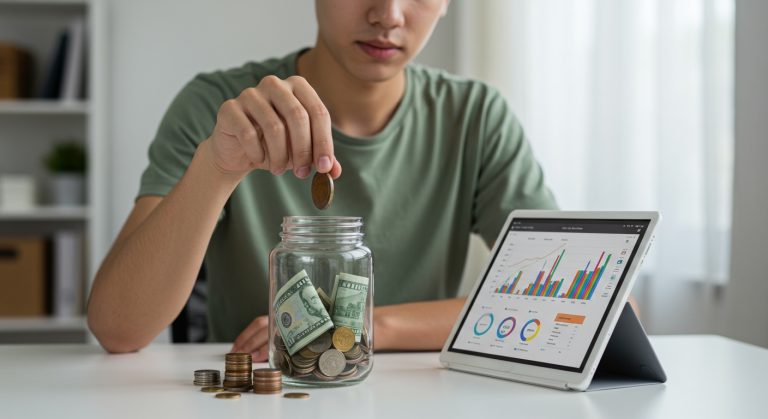What Are Consumer Non Durable Goods? 15 Key Facts Explained for Everyday Shoppers
15 key facts explained for everyday shoppers, what are consumer non durable goods? Learn their meaning, examples, economic role, and importance in daily life with this complete, easy-to-read guide.
What Are Consumer Non Durable Goods?
Every day, people shop for groceries, toiletries, and clothing without giving much thought to how these products are classified in economics. Yet, these items fall into a specific category known as consumer non durable goods. These goods are essential in our daily lives and play a significant role in economies worldwide. But what exactly are they, and why are they important? Now let’s explore in details.
What Companies Are In The Consumer Non-Durables Field?
The consumer non-durables field includes companies that produce goods meant for short-term use, typically lasting less than three years. These products are essential for everyday life and are purchased frequently, making this sector highly competitive and diverse. Now let’s explore the major types of companies in this field.
1. Food and Beverage Companies
Some of the biggest names in consumer non-durables are food and beverage giants. Companies like Nestlé, PepsiCo, Coca-Cola, Unilever, and Mondelez International dominate the global market, producing items that people consume daily, from snacks and packaged foods to drinks and frozen meals.
2. Personal Care and Household Products
Household essentials such as soaps, shampoos, cleaning supplies, and cosmetics also fall under non-durables. Leaders in this category include Procter & Gamble (P&G), Colgate-Palmolive, Johnson & Johnson, and Kimberly-Clark. These companies create trusted products that consumers buy regularly.
3. Tobacco and Alcohol Producers
Another strong segment within non-durables includes companies producing tobacco and alcoholic beverages. Firms like Philip Morris International, Anheuser-Busch InBev, Diageo, and British American Tobacco are key players in this space, catering to global demand for these consumable goods.
4. Fashion and Apparel Brands
While not as long-lasting as durable goods, fashion and fast-fashion companies also fall into the non-durables category. Brands like H&M, Zara, and Nike produce clothing, footwear, and accessories that are used frequently and replaced more often.
Consumer Goods
1. Concept of Consumer Goods
In economics, consumer goods refer to the products and services purchased by individuals for personal use. They are not meant for further production or resale but directly satisfy human needs.
2. Major Classifications of Consumer Goods
Economists divide consumer goods into three broad categories:
(i). Durable Goods
These are long-lasting products, such as cars, refrigerators, and furniture, that can be used repeatedly over several years.
(ii). Non Durable Goods
These are items consumed quickly, such as food, drinks, and personal care products, which typically last less than three years.
(iii). Services
Intangible activities like education, healthcare, or transportation fall under services.
Defining Non Durable Goods
Characteristics of Non Durable Goods
Non durable goods share common features:
- Short lifespan: Typically used up quickly.
- High purchase frequency: Bought regularly or even daily.
- Essential nature: Many are necessities like food and clothing.
- Lower price points: Generally more affordable than durable goods.
Difference Between Durable and Non Durable Goods
While durable goods provide long-term value, non durable goods offer immediate consumption. A washing machine may last for years, but laundry detergent is consumed in weeks. Both are vital, but they serve different purposes in the consumer economy.
Examples of Non Durable Goods
1. Food and Beverages

Staples like bread, milk, fruits, and packaged snacks are classic non durable goods. These perish quickly and require frequent replacement.
2. Clothing and Footwear

While some garments may last for years, many fashion items, everyday wear, and footwear are considered durable goods due to their limited usable life.
3. Toiletries and Household Supplies

Toothpaste, shampoo, cleaning agents, and paper towels are consumed daily, making them prime examples of non durable goods.
4. Stationery and Office Supplies
Pens, paper, and ink cartridges are inexpensive yet essential products consumed rapidly in schools, homes, and offices.
Importance of Non Durable Goods in Daily Life
Meeting Basic Human Needs
Food, clothing, and hygiene products ensure survival and health, making non durable goods indispensable.
Supporting Daily Convenience
From coffee in the morning to soap before bed, non durable goods enhance comfort and convenience throughout the day.
Driving Consumer Spending
Because they are purchased frequently, these goods contribute heavily to retail sales and overall consumer spending.
Economic Role of Non Durable Goods
1. Contribution to National Economies
Non durable goods make up a large share of household expenditure. Countries measure their impact through consumer price indexes (CPI).
2. Impact on Employment and Production
Industries producing food, textiles, and household goods employ millions globally, creating steady job opportunities.
3. Trends in Consumer Spending on Non Durables
Modern consumers increasingly seek organic foods, sustainable fashion, and eco-friendly cleaning supplies reshaping the sector.
How Businesses Market Non Durable Goods
Branding and Packaging
Attractive packaging and strong branding help products stand out in crowded markets.
Pricing Strategies
Affordable pricing and discounts encourage frequent purchases, especially for competitive items like snacks or beverages.
Retail and E-Commerce Channels
From supermarkets to online marketplaces, distribution channels play a crucial role in delivering non durable goods quickly to consumers.
Global Perspective on Non Durable Goods
Regional Differences in Consumption
Spending patterns differ: Western countries spend heavily on branded packaged goods, while developing nations prioritize staple foods and clothing.
Influence of Culture and Lifestyle
Cultural traditions like dietary preferences or festive clothing shape, what non durable goods are consumed in each region.
Challenges in the Non Durable Goods Sector
Sustainability Concerns
High consumption often leads to packaging waste and environmental issues.
Short Product Life Cycles
Fashion and fast-moving consumer goods (FMCG) industries face rapid turnover, creating pressure on supply chains.
Supply Chain and Inflation Issues
Global disruptions, like rising fuel prices, can raise costs of essential non durable goods, directly impacting consumers.
The Future of Consumer Non Durable Goods
Growth of Eco-Friendly Alternatives
Biodegradable packaging, organic foods, and sustainable fabrics are increasingly in demand.
Innovations in Packaging and Manufacturing
Smart packaging that extends shelf life or reduces waste is reshaping how non durable goods are consumed.
Changing Consumer Preferences
Shoppers are becoming more conscious, demanding transparency, ethical sourcing, and healthier product options.
Marketing of consumer durables and non durable goods
Marketing of Consumer Durables
Consumer durables, such as cars, washing machines, refrigerators, and smartphones, are high-value items designed for long-term use. Because these products have a longer replacement cycle, marketing strategies must focus on building trust, demonstrating value, and differentiating brands in highly competitive markets.
Companies emphasize product quality, durability, warranty offers, financing options, and after-sales service. Advertising campaigns often highlight advanced features, innovation, and lifestyle benefits to appeal to rational decision-making. Since consumers take time to research before making a purchase, businesses invest in detailed product demonstrations, showrooms, customer testimonials, and online reviews.
The goal is not just a single sale, but also brand loyalty and repeat purchases when customers upgrade in the future.
Marketing of Non Durable Goods
Non durable goods, such as food, beverages, personal care items, and clothing, are low-cost products that are purchased and consumed frequently. Unlike durables, these goods rely on volume sales, impulse buying, and convenience. Marketing focuses heavily on attractive packaging, competitive pricing, wide availability, and brand recall.
Since purchases happen regularly, businesses invest in frequent promotions, discounts, and advertising across multiple platforms to keep their products top of mind. Shelf placement in supermarkets, e-commerce visibility, and social media campaigns play a major role in influencing consumer choices. With non durables, brand loyalty is important but often secondary to immediate availability and affordability, making consistency and accessibility critical in driving sales.
Consumer Durables vs Non Durable Goods
Comparison of Marketing Strategies:
| Aspect | Consumer Durables | Consumer Non Durables |
|---|---|---|
| Product Nature | Long-lasting, high-value items (e.g., cars, appliances, electronics). | Short-lived, low-cost items (e.g., food, toiletries, clothing). |
| Purchase Frequency | Infrequent, long decision-making cycle. | Frequent, often daily or weekly purchases. |
| Consumer Decision | Rational, research-based, influenced by features, warranties, and reviews. | Impulse-driven, influenced by price, packaging, and availability. |
| Marketing Focus | Quality, durability, innovation, financing options, after-sales service. | Attractive packaging, affordability, convenience, and quick availability. |
| Advertising Approach | Detailed demonstrations, lifestyle appeal, expert endorsements, showrooms. | Mass advertising, promotions, discounts, point-of-sale displays, social media ads. |
| Brand Loyalty | Strong customers often stick to trusted brands for long-term use. | Moderate loyalty exists but availability and price can easily sway buyers. |
| Sales Strategy | Relationship-based, aiming for trust and long-term retention. | Volume-based, aiming for frequent and repeated sales. |
Wrap Up
The Everyday Value of Non Durable Goods
Consumer non durable goods are the backbone of daily life, meeting immediate needs and shaping spending habits worldwide. From food and hygiene products to clothing and stationery, these goods influence economies, lifestyles, and even cultural traditions. As consumer preferences evolve, sustainability and innovation will guide the future of this vital sector.
FAQs on Consumer Non Durable Goods
1. What are 5 examples of non durable goods?
ANS. Bread, milk, shampoo, clothing, and pens are common examples.
2. Why are non durable goods important?
ANS. They fulfill everyday needs, support economies, and ensure basic living standards.
3. How do non durable goods affect the economy?
ANS. They contribute to consumer spending, job creation, and national economic indicators like GDP and CPI.
4. What is the difference between durable and non durable goods?
ANS. Durable goods last years (e.g., cars), while non durables are consumed quickly (e.g., food).
5. Are clothes considered non durable goods?
ANS. Yes, because they typically wear out or go out of style within a few years.
6. What industries rely most on non durable goods?
ANS. Food, fashion, personal care, and household product industries are heavily dependent on non durables.



![Top 10 Best Logistics Companies to Work For in 2025 [Ranked & Reviewed] 20 sketch 1754242848456](https://loadcoded.com/wp-content/uploads/2025/08/sketch-1754242848456-150x150.jpg)











